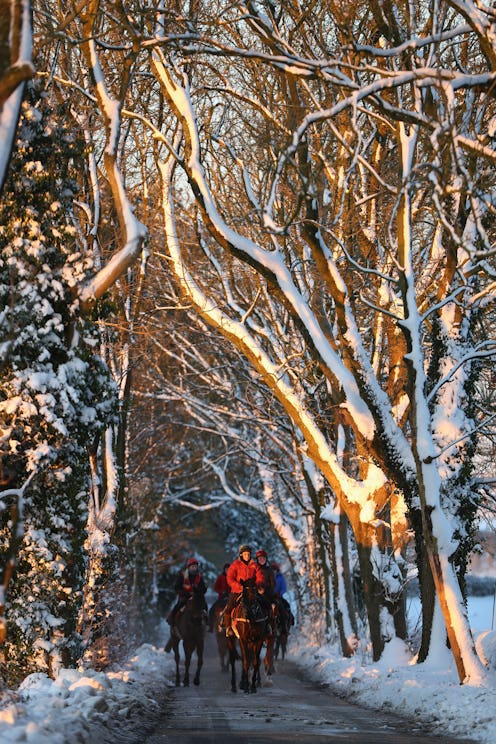
No, you're not imagining things: the sun is setting at, like, 4 p.m. these days. It's a little rough out there, not to mention freezing. But! The good news is that the winter solstice is on its way, and quickly. So, when does the winter solstice start in 2017? Hold on, everyone it's coming in hot — and soon.
The Gregorian calendar, which was introduced by Pope Gregory XIII in 1582, has since been widely adopted throughout the world. But for millennia — way before we began relying on a 365-day calendar and a 12-month system — humans were marking the passage of time with seasons, punctuated by equinoxes and solstices. As the Earth moves through its orbit, we experience two equinoxes (which is when the day and night are equal in length) and two solstices (the longest and shortest days of the year). There's the vernal (spring) equinox, which occurs in March, and the autumnal equinox, which falls in late September. Then, you've got the summer solstice in June, which is not only the longest day of the year, but also the point when days begin getting shorter and night begins getting longer. Ugh.
The winter solstice, which in 2017 falls on Dec. 21, is the shortest day of the year, aka when night is the longest — and the day that days will begin to slowly get longer until next June's summer solstice. According to Time and Date, the sun will rise at 7:16 a.m. EST and set at 4:30 p.m. EST, which means those of us who keep to a 9-to-5 schedule are going to be heading home in darkness. Yuck.
And unfortunately, that post-5 p.m. nightfall won't actually be happening until late January.
For many ancient civilizations, especially agriculturally-based communities, the equinoxes and the solstices held particular importance, from both a practical and a spiritual perspective. The winter solstice was often marked by a celebration. Though it was a rough moment to get through — shortest day of the entire year and the first official day of winter, in a society with no heat or electricity? No, thank you — the solstice was also a beacon of hope. The days would begin lengthening again. Spring and summer, daylight, warmth, the planting season, all of these were on the horizon.
In what is now called Arizona, the Hopi tribe has been celebrating Soyal, their winter solstice festival, for centuries. Purification practices, ritual dancing and gift-giving were, and continue to be, at the heart of Soyal. Celebrants also welcome protective spirits, called Kachinas, down from their mountain dwellings.
Meanwhile, in Iran, the winter solstice is rung in during Yalda, the last day in the Persian month of Azar (Iran uses a Persian calendar, rather than a Gregorian one). Yalda is seen as the victory of light over darkness, in more ways than one. Not only is it the shortest day of the year and the point when the days begin to get longer, but it's considered the birthday of Mithra, the sun god. Families often wait up to watch the sunrise together.
Many of our contemporary, Western holiday practices are actually gleaned from the ancient Roman festival of Saturnalia, yet another winter solstice celebration. In honor of Saturn, god of agriculture, Romans feasted, partied, exchanged edible gifts and carved figurines and created one another with a hearty, "Io, Saturnalia!" Wealthier citizens were expected to take struggling families under their wings during this time of year, often paying for the month's rent. The early Christians admired the Romans for their ability to withstand harsh winters and incorporated a number of Saturnalia's key elements into the celebration of Christmas.
So this year, as the sun rises and immediately sets on Dec. 21, call your person. Hug your friends. Find comfort in that the fact that the world really does keep spinning and better times are bound to be on the horizon.